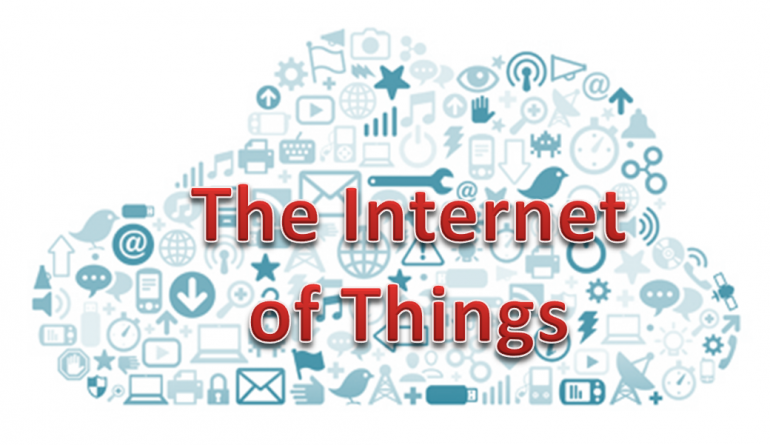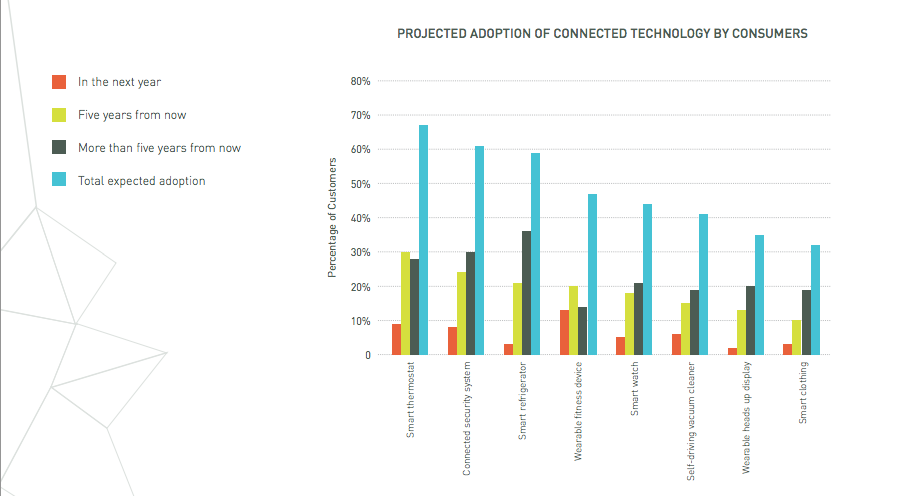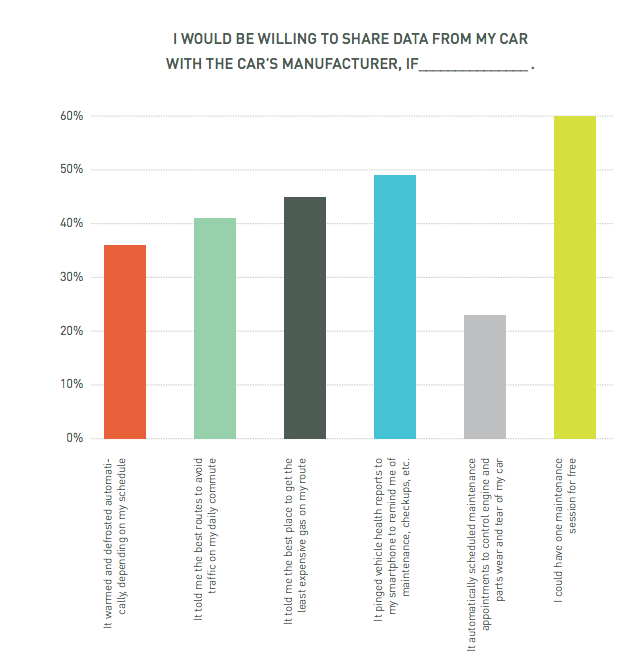Widespread mainstream consumer adoption of Internet of Things (IoT) technology is inevitable, according to Acuity Group’s 2014 Internet of Things Study. Moreover, wearable technology ownership will double by 2015 to 14 percent of all homes.
The study looked at the new, hot IoT phenomenon in tech, or everyday devices connecting to the Internet through tiny embedded sensors and computing power. Devices are enabled to sense and transmit information online, offering consumers greater information and influence over their environment.
But while the everyday adoption of IoT tech is still in its infancy, and has taken a few years to really catch on in tech startup lingo, there is an extremely bright future according to Acuity Group.
Wearable fitness and technology applications currently stand to most benefit from this growth, with 13 percent of consumers planning to purchase within the next year and a total of 33 percent looking to adopt in the next five years. Smart clothing and heads-up displays are the least likely to catch on, with only about 3 percent of consumers expecting to purchase either type of device in the next year.
There have certainly been barriers to adoption and these mainly surround a lack of basic understanding about IoT and its value, over the past few years. The majority of consumers (87 percent) hadn’t heard of the term, “The Internet of Things,” prior to the study.
Meanwhile, 64 percent of consumers haven’t purchased an in-home IoT device because they didn’t know they could buy items like smart fridges and smoke detectors, while 40 percent of consumers did not know that wearable technology was available in the marketplace. Other consumers said they were apprehensive about recent, highly public data breaches that have plagued major retailers and companies.
Indeed, the technology’s growth “is being matched by an equally large growth in security concerns.”
Companies can and will overcome these barriers though. Many of the hurdles around IoT tech revolve around lack of understanding, so Acuity Group said educating consumers will be key.
Companies can overcome potential barriers such as usefulness, price, security and privacy through several means, like Location-based coupons or offers delivered to their mobile device for frequently purchased foods.
Most unfortunate among the revelations of the study was when it revealed that “despite concerns with security and privacy, consumers incentivized with coupons or helpful information are open to sharing data with third parties.”
“Forty percent of consumers are willing to share data from their wearable devices with retailers or brands in exchange for coupons, discounts or information,” the report added. Somewhere in the world, Ed Snowden is yelling “no! Don’t do it!”
The study concluded that the largest opportunities for brands lie in presenting consumers with specific, measurable results from the data they are sharing. Companies using data to connect with consumers via IoT devices should ensure they’re offering value every time – whether that be through special offers targeted specifically to past behaviours, or information on how to improve the quality of daily life through specific means.
And even though widespread adoption of IoT technology is not here yet, the market is showing “future signs of massive consumer adoption of connected devices and objects.”




